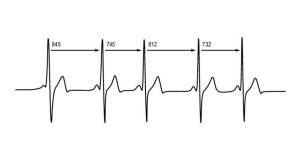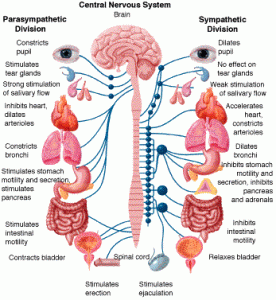Edit 03/25/2014: For a more in depth discussion on HRV click here
To open my discussion on HRV and its potential usefulness in athletes I would like to first highlight some of HRV’s most promising attributes.
- HRV can help determine if and when one is overtraining
- HRV can inform you when you are more adaptive to training and when you are less adaptive (telling you when to train hard and when to back off)
- HRV can potentially predict if you will perform better or worse on a given day (I’m not sold on this yet)
- HRV pretty accurately reflects recovery status
If you take your sport/training seriously, this information is extremely valuable. Throughout the next few posts I will do my best to fully explain what HRV is, how it works and from there we will discuss how to put it to use practically. I would also like to mention that HRV can be effective in both strength and endurance athletes. In fact, the majority of the research that exists on HRV has been performed on endurance athletes. So if you are a runner, cyclist, rower or all of the above, this blog may still offer useful information.
By now you might be wondering what the heck is HRV exactly? HRV is the measurement of time between each heartbeat. If you thought that the heart beats on a fixed rhythm you are incorrect. The time interval between each heart beat is highly variable. Specifically, we’re talking about the measurement of time between each R-R interval from an electrocardiogram (ECG) measurement. The variability in your heart rate provides critical information about the function of your autonomic nervous system (ANS). Typically HRV is measured on an ECG in a clinical setting. Fortunately, other more affordable and accessible devices exist that will measure your HRV (I will provide more info on these later).

What is the ANS and why is it important?
Here’s where the discussion turns a little more technical but bear with me. The ANS contributes to the body’s homeostasis by exciting or inhibiting cardiac muscle, smooth muscle and glands in response to subconsciously perceived visceral sensations (Tortora & Derrickson 2006). The ANS is comprised of two branches; the sympathetic nervous system (SNS) and the parasympathetic nervous system (PSNS). The easiest way to distinguish the differences between these two branches is to associate “fight or flight” responses with the SNS and “rest and digest” responses with the PSNS.
Sympathetic activity increases heart rate, force of contraction and blood pressure; increases blood flow to your muscles while decreasing blood flow to your gastrointestinal organs and releases sugar into the blood to provide energy to the working muscles. Adrenaline and glucocorticoid hormones are released to enhance these actions. In essence, the SNS responds to stress by providing the body with the resources and ability to move quickly to safety or to fight in response to danger. Think about anytime you’ve felt an adrenaline rush before a big sporting event or when someone scared you. That is your SNS being activated.
In contrasts, the PSNS does the complete opposite. In the absence of stress the body will reduce your heart rate and blood pressure; increase digestive processes and focus on the build up and repair of tissues (such as muscle) and storage of sugar (glycogen). In essence it recovers the body from any damage done during the stress response of the SNS.
Our SNS is activated when we train or compete. This is a good thing as it will enhance our ability to perform. However, intense training is extremely stressful on the body and requires sufficient recovery. It is important to understand that the acute response to a heavy strength training workout is actually weakened and damaged muscle tissue and a fatigued central nervous system. This is why we need to allow for sufficient recovery time to let the parasympathetic nervous system mobilize adaptive reserves and repair our muscle tissue and thus bring us to an increased level of strength. An imbalance between sympathetic and parasympathetic activity can lead to reductions in performance and in severe cases, overtraining.
Enter HRV. HRV provides a non-invasive look at the function of our autonomic nervous system. If our body is still stressed from training it will be reflected in our HRV. Alternatively, if we are sufficiently recovered from training it will also be reflected in our HRV. Training intensely when HRV scores are poor would be counterproductive. When HRV scores are high, intense training will be well tolerated because adaptive reserves are high.
Keep in mind that it is not just training stress that the body must recover from. Any form of stress, be it mental or physical will use up adaptive reserves and elicit a stress response. Money problems, fighting with your significant other, moving to another city and so forth can all be extremely stressful on the body. HRV will be effected by any stressor making it all the more valuable to monitor. In future posts I will discuss how different non-training related events have significantly affected my HRV scores.
I will wrap this post up here as this can be a lot to swallow for anyone without a background in human physiology. In my next post I will discuss some research that supports the claims I made earlier about HRV.
Reference
Tortora, G. & Derrickson, B. (2006) Principles of Anatomy and Physiology 11th Edition. Biological Sciences Textbooks Inc.


Pingback: How to increase HRV – Part 1: Inflammation | HRVtraining
Pingback: HRV for the recreational exerciser and average person | HRVtraining
Pingback: Monitoring Athletes: a sample survey | HRVtraining
Pingback: All about the ithlete HRV device | HRVtraining
Reblogged this on Collins Strength and Conditioning.
Pingback: Science for Sport | Heart Rate Variability (HRV)
Pingback: Heart Rate Variability (HRV) – The Magic Number | Reclaiming your Energy
Pingback: Intermittent fasting and insulin – Part 1, Introduction – Yeah… I did that…
Pingback: Heart Rate Variability - Why measure it? - Metrifit Ready to Perform
Pingback: Има ли ползи следенето на HRV? - Strong by Science